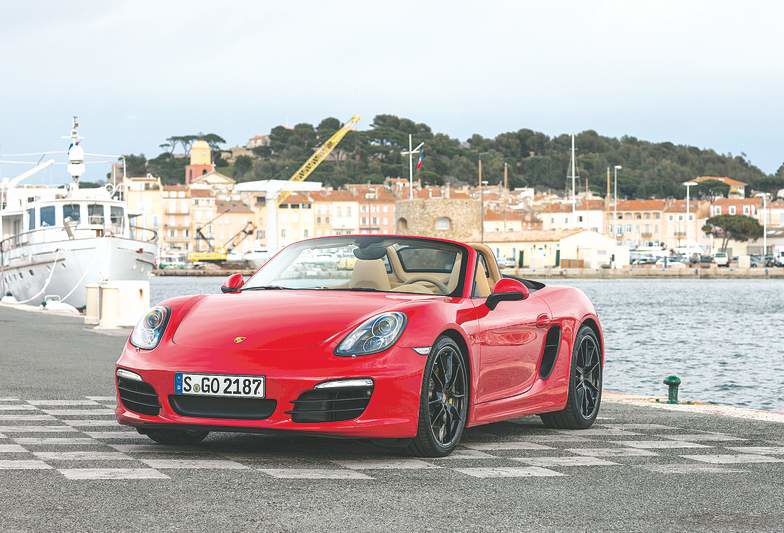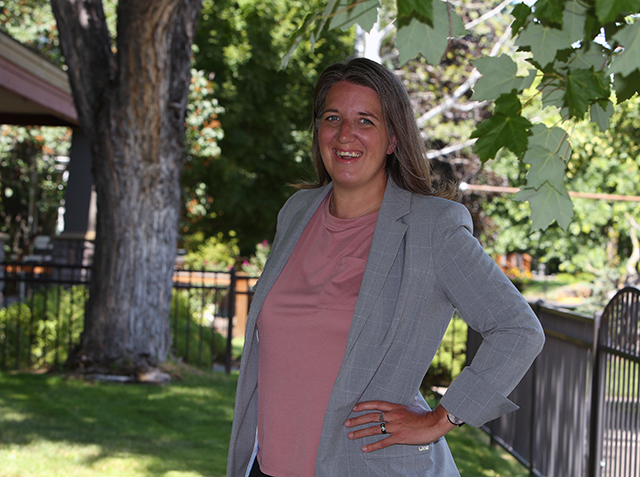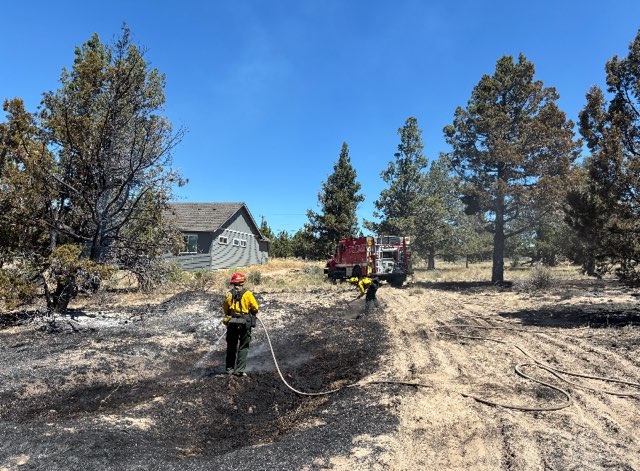Porsche Boxster: old flair, new look
Published 4:00 am Sunday, December 30, 2012

- The 2013 Porsche Boxster, the car's third-generation design, is sharper-looking than ever.
Whenever a carmaker sets about revising a popular car, especially a favorite among roadster junkies, you want to hold your breath.
Careful now, don’t tweak that smooth design too much. And, no, please don’t touch the hydraulic-assisted steering. And must you mess with the interior setup?
Trending
Well, relax. Breathe. Porsche has evolved the Boxster into its third generation, revised it inside and out, and it’s all good.
First off, it’s sharper-looking than ever. It has more curves, more definition on the sides, marked by large air intakes in front of the rear wheels. And you can see the fenders from the driver’s seat. I like that.
The overall length is one inch longer, but the wheels have been pushed toward the corners so the wheelbase has been extended by more than 2 inches. And the windshield has been moved four inches forward.
Bottom line: It looks racier, more aggressive.
And it feels racier, too.
Despite the fact that Porsche shrank Boxster’s engine displacement slightly, from a 2.9-liter flat-six to a 2.7-liter, it boosted horsepower to 265. Thank the new direct injection for those 10 extra ponies. Torque is down a bit, to 206 pound-feet, but I dare anyone to recognize it.
Trending
The Boxster S still gets the 3.4-liter flat-six that produces 315 hp (5 more horses than last year, thanks to intake and exhaust alterations) and 266 pound-feet of torque.
On the open road, the grins come quickly. Boxster will do 0-60 in 5.4 seconds, and it doesn’t matter which tranny you have.
With the 3.4-liter, 0-60 comes in at an even quicker 4.9 seconds. And the get-up-and-go stretches nicely across the torque range, meaning there’s plenty of pull at every speed.
The ride is on the firm side but not uncomfortably so; it’s certainly smooth enough for daily driving.
Sweep through the corners and the Boxster, not surprisingly, stays glued to the road. Cornering and overall stability are improved over last year. Boxster’s lightness and mid-engine layout contribute to that performance. So does its longer and wider stance.
The new electric steering, switching from hydraulic, may not sit well with driving purists. It’s extremely accurate and responsive, but it dulls the road-feel sensation in comparison. Still, it’s doubtful most will notice the difference.
Either engine works with the two transmissions offered, the standard 6-speed or the 7-speed automatic borrowed from the 911. Both are smooth and fun.
Auto start-stop features usually irk me. The engine shuts off at each stop and restarts as you lift your foot from the brake. Truly, it is seamless and not that bothersome. But if that momentary hesitation bugs you, there’s a solution: Keep it on sport mode and you can override the feature.
The automatic, by the way, actually helps achieve better mileage than the manual, compiling 22 mpg city, 32 highway on the 2.7-liter (using the auto-stop feature). The manual gets 20 mpg city, 30 highway.
Roadster fun starts with the top down, and with the Boxster it’s a breeze. It is fully automatic, including the latch. You don’t touch a thing besides the button. And the entire process is smooth, quiet and quick, so you’ll handle it before the third raindrop hits your nose.
In spite of the goodies outside and under the hood, many will say their favorite improvements are inside, which is new.
It starts with roominess — for both occupants. Seats have been positioned lower to accommodate taller drivers, and there’s an extra inch of rail for the seats to slide rearward, too. Copied from the 911, they are comfortable, too.
The vertical, center console is much like the 911, too, and houses the easily-reached shifter and switches.
While there are cargo holds in the front and rear, neither amounts to much. Total volume is 10 cubic feet. Good luck — you’ll do fine with groceries if you don’t tend to eat too much.
The Boxster gets ABS, traction and stability control, side-impact air bags plus roll bars. Choose the Racing Yellow, like the test car, and you get another safety feature: Everyone will see you coming a mile away.
All Boxsters are two-seat convertibles and the base version comes packed with goodies, like the power top, 18-inch wheels, AC, cruise control and four-speaker audio with Bluetooth.
Move up to the S version for more power, 19-inch wheels with red brake calipers.
With the two trims come a multitude of options that can drive the price through the soft top. The Premium package buys a wind deflector, adaptive headlights and 10-way power sport seats. The Infotainment package gets you a navigation system and 7-speaker sound system with satellite radio and Bluetooth/iPod compatibility.
You can also get items separately, like 20-inch wheels or the sport wheel with PDK paddles.
And a Sport Chrono package, including chassis settings, lap timer and dynamic transmission mounts, is for the racers.
I told you we were headed through the roof.
Still, it comes in tens of thousands less than the 911. And, while there are some worthy opponents from BMW and Mercedes, I don’t think anyone can top the Boxster for pure roadster performance.
2013 Porsche Boxter
Base price: $49,500
As tested: $75,615
Type: Convertible roadster
Engine: Boxter: 2.7-liter direct injection flat-six with 265 horsepower and 206 pound-feet of torque. Boxter S: 3.4-liter flat-six with 315 horsepower and 266 pound-feet of torque.
Performance: Boxter: 0-60 in 5.4 seconds. Boxter S: 0-60 in 4.9 seconds.
Mileage: 20-22 mpg city, 30-32 mpg highway








